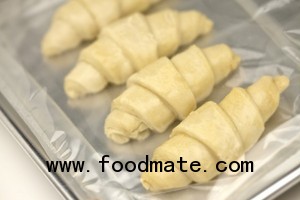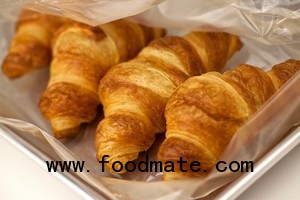
Kansas-headquartered packaging specialist Multivac has achieved global marketing rights for DuPonts new film technology and has launched Mylar Bake technology across Europe.
The product is a sealed, thermoformable film packaging that can be used to cook baked goods at temperatures of up to 218 °C (425 °F).
Speaking to BakeryandSnacks.com at IBA 2012 in Munich, Frank Barrel, materials business unit manager at Multivac, said the technology can lead to significant reductions in formulation costs.
“This brand new technology retains moisture and flavours during cooking and works to intensify end product taste,”Barrel said.
“This enables bakers and manufacturers to reduce flavouring in their formulations by around 50-75% and this can be topical or inclusions,” he said.
The increased moisture retention allows fat and salt reductions as well, he added, and acts to eliminate shrinkage of goods due to spoilage, thus increasing shelf-life.
When cooked above certain temperatures the seal opens to vent ensuring browning or crisping. However, at lower temperatures venting does not occur, enabling par-baking.
The film is also resistant to temperatures as low as -60 °C enabling storage in freezers and fridges.
New cooking realms

The vacuum packaging acts as a replacement to traditional glassware, Barrel said.
“This represents a change to the cooking paradigm,”he said.
“This is something brand new; we are entering into a brand new market space with this product,” he added.
The partnership with DuPont was struck in August and Multivac is now pushing forward with the product in Europe.
The product is already in place on the Australian market for bread, and discussions with large, medium and speciality bakeries are underway across the US.
“We see this product as an opportunity to increase our market share. We see a future in value added materials,” Barrel said.
Mylar Bake complies with US Food and Drug Administration regulations, as well as EU regulatory requirements and CFIA laws.





